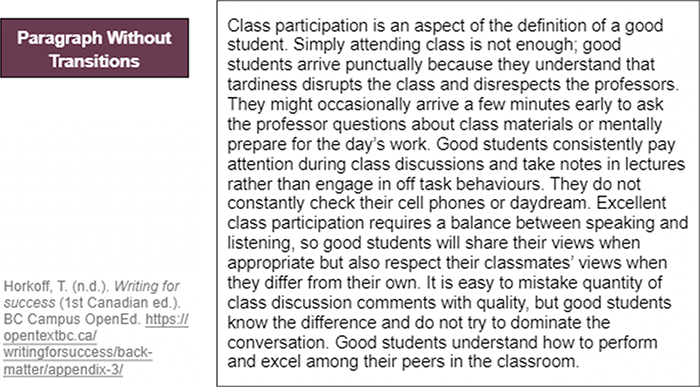
Transitional words and phrases enable your reader to understand how one idea relates to the previous idea. Transitions form logical connections between ideas, and they strengthen the organization of these ideas. Transitions signal the order of ideas, highlight relationships, unify concepts, and let readers know what’s coming next or remind them about what’s already been covered.
When instructors or peers comment that your writing is choppy, abrupt, or needs to “flow better”, those are some signals that you might need to work on building some better transitions into your writing.
Compare the sample paragraphs with and without transitions; notice how the paragraph with the transitions flows better.

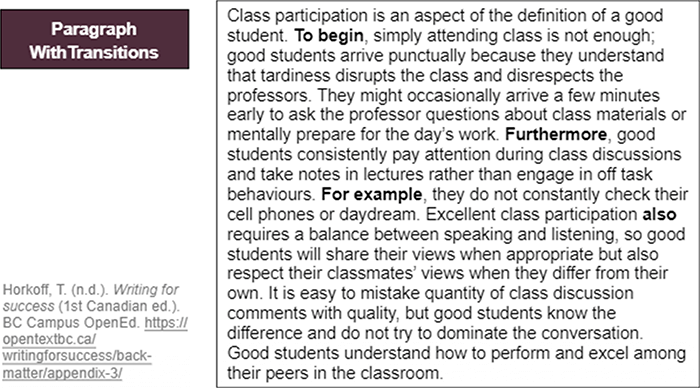
Effectively incorporating transitions often depends upon your ability to identify words or phrases that will indicate for the reader the kind of logical relationships or connections you want to convey.
View the chart below or check out this website to see how to use different transitions and conjunctions.
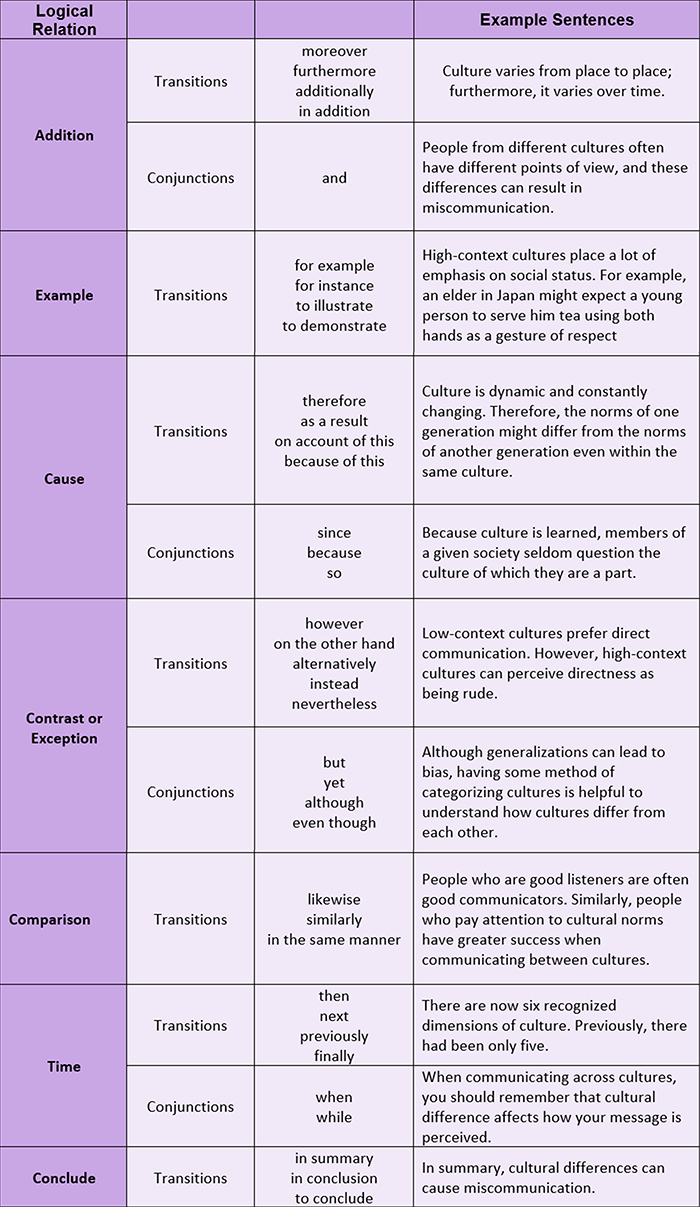
When your teachers talk about “transitional elements,” they are probably referring specifically to “conjunctive adverbs”: therefore, however, additionally, finally, etc. These types of transitional elements link ideas, but they do not join sentences.
Typically, these transitions can only be placed
1. At the beginning of a sentence:
I studied hard. Consequently, I passed the test.
2. After a semi-colon that joins two related sentences
I studied hard; consequently, I passed the test.
Remember that a comma is needed after the transitional element to offset it from the main sentence clause.
Transitions to Show Order of Importance
Transitions can be used to show order of importance, which means arranging your ideas from most to least important or vice versa. Sometimes you may want to end with the most important idea so that it acts as the climax at the end of the paragraph or essay.

Transitions to Show Additional Support
Transitions can be used to show additional support for an idea.

Transitions to Introduce Examples
The simplest way to tell a reader that an example will follow is to say so using a transitional word or phrase.

Transitions to Show Time Order
Transitions can be used to indicate chronological order, which means to arrange ideas in order from present to past or from past to present. Similarly, transitions can be used to show a sequence of events, which means to arrange ideas in the order that they happen.

Transitions to Show Similarity
Transitions can be used to compare ideas. In other words, transitions can connect ideas by suggesting that they are in some ways alike.

Transitions to Show Contrast
Transitions can be used to contrast ideas. In other words, transitions can connect ideas by suggesting that they are in some way different.

Transitions to Summarize or Conclude
Transitions are also used to introduce a summary or conclusion in a paragraph or essay.

It’s important to consider how to emphasize the relationships not just between sentences but also between paragraphs in your essay.
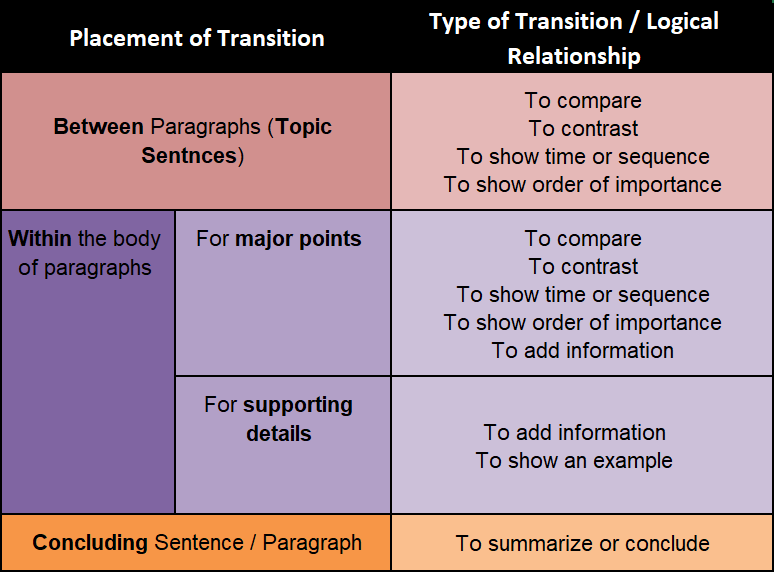
Signposts are basic transitional words or phrases that indicate where you are in the process of organizing an idea. For example, signposts might indicate that you are introducing a new concept, that you are summarizing an idea, or that you are concluding your thoughts.
Be careful not to overuse these types of transitions in your writing. Instead, think of more creative ways to let your readers know where they are situated within the ideas presented in your paragraph or essay.
You might say, “The first problem with this practice is….”. Or you might say, “The next issue to consider is…..”. Or you might say, “Some final thoughts about this topic are….”.
Sometimes, as you conclude a paragraph, you might want to give your readers a hint about what’s coming next.
This transitional strategy can be tricky to employ. Make sure that the conclusion of your paragraph doesn’t sound like you’re leaving your readers hanging with the introduction of a completely new or unrelated topic.

Rather than concluding a paragraph by looking forward, you might instead begin a paragraph by looking back.

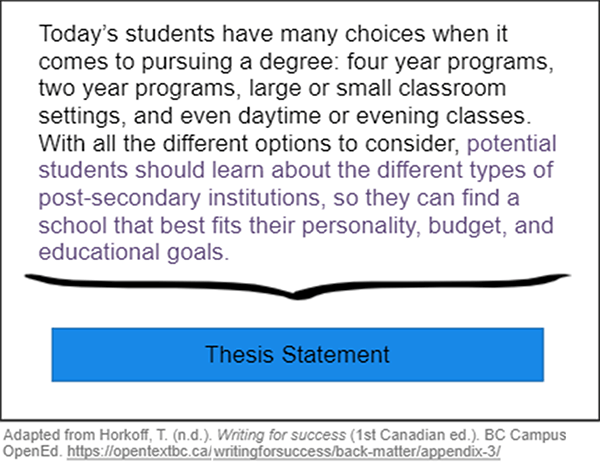
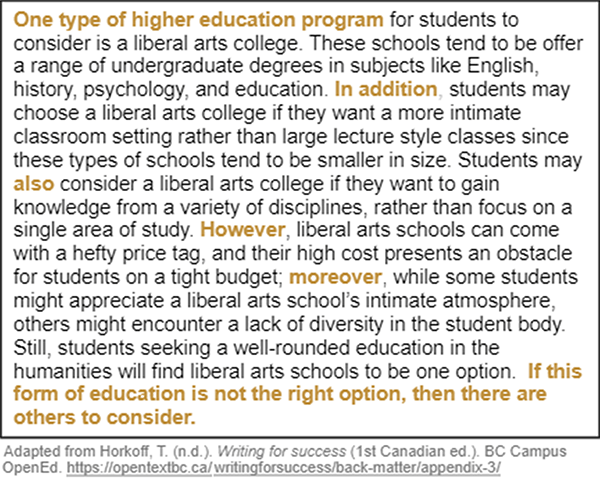
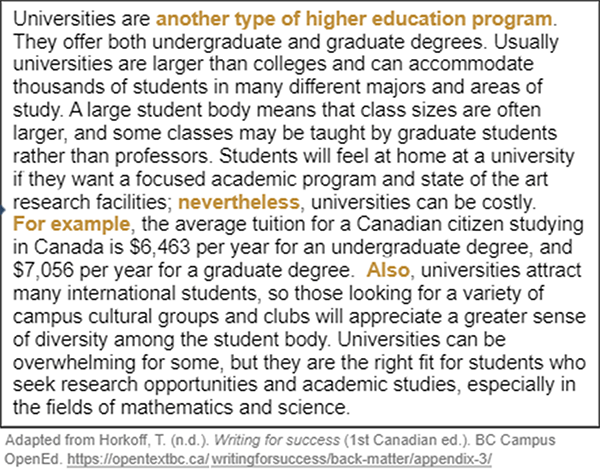

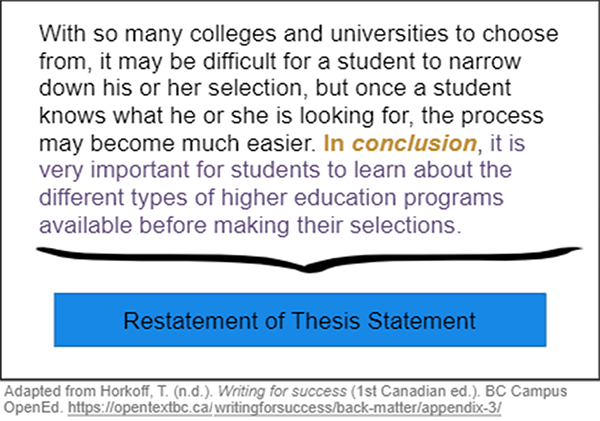
Evaluate Your Use of Transitions
Remember to include enough transitions so the reader can easily follow the flow of your ideas, but do not overuse the same transitions to the point where they become redundant.
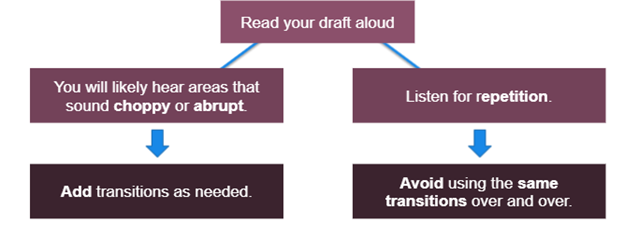
Drag the appropriate transition into its correct spot in the paragraphs.
To learn more about transitional elements
CS 050: Academic Writing and Grammar Copyright © by Confederation College Communications Department and Paterson Library Commons is licensed under a Creative Commons Attribution-NonCommercial-ShareAlike 4.0 International License, except where otherwise noted.